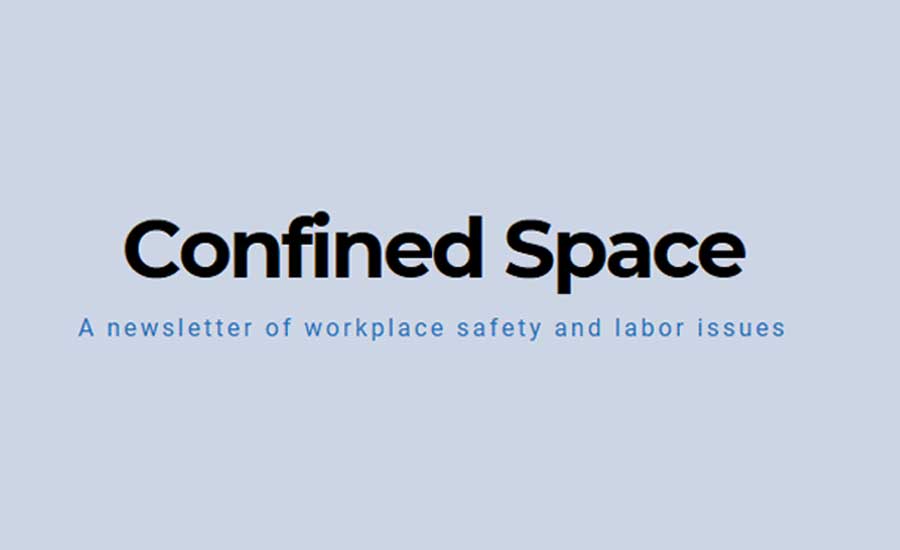A Confined Space blog post
OSHA and industry reach beryllium settlement

Posted with permission from Confined Space, a newsletter of workplace safety and labor issues.
OSHA and the Beryllium industry have reached a settlement regarding changes in OSHA’s Beryllium standard for general industry. The changes, which mostly focus on clarifications of “ancillary requirements” dealing mostly with regulated work areas, hygiene (cleaning of workers and equipment) and medical management, will be phased in in two major stages. The permissible exposure limit (PEL) will remain the same, as will requirements for engineering controls (for example) which don’t come into effect until 2020.
To address some of the simpler changes will OSHA will issue a Direct Final Rule and those changes that may be more controversial (and require comment) will be covered in a proposal to be issued by the end of the year. Because the proposal will likely be followed by a months-long comment period and possibly a hearing before a final standard is issued, years down the road, OSHA will, in the meantime, enforce the provisions of the proposed rule (or the DFR in the period before the proposal is issued.)
Simple Explanation
Regulated industries sue OSHA following the issuance of every major standard or regulation. While some of the lawsuits are anti-regulatory ideological exercises aimed at taking down the entire rule, others filed by the affected industries are often an attempt to clarify requirements that may not be clear and to define more accurate exactly how the standard will be enforced. Often, these clarification and enforcement issues are resolved in a settlement that requires OSHA to issue “Questions and Answers” (Qs & As) to immediately address some of the issues, to be followed by a detailed compliance directive that will describe in great detail how the standard will be enforced in the field. Occasionally, when there are actual mistakes in the regulatory text (such as a definition that may not have been written accurately) the regulatory text is changed through a “technical correction” which is published in the Federal Register.
In this case, however, Materion, the main industry representative (who reached an agreement with the United Steelworkers union (USW) that formed the basis of the original beryllium standard), didn’t trust clarifications made by Qs & As or a compliance directive, possibly fearing they could be changed by future administrations, and insisted on the language actually being clarified in the regulatory text. Because nothing is easy (especially at OSHA) when it comes issuing or modifying any standard or regulation, the settlement spells out a complex schedule of direct final rules, proposals, stays in enforcement of several sections and eventually a final standard that should (hopefully) make everyone happy.
Construction and Maritime
This agreement only addresses the General Industry Standard and has no effect on what the agency is planning to do about the construction and maritime beryllium standards. As we’ve described before, OSHA issued a proposal last June to keep the new PEL, but remove the “ancillary provisions” for construction and shipyard workers. The ancillary provisions would have required employers to provide exposure monitoring, regulated areas (and a “competent person” in construction), a written exposure control plan, personal protective equipment (PPE), and work clothing, hygiene areas and practices, housekeeping, medical surveillance, medical removal, and worker training for construction and shipyard workers exposed to beryllium from abrasive blasting using coal slag compounds that contain beryllium. OSHA will begin enforcing “the new lower 8-hour permissible exposure limit (PEL) and short-term (15-minute) exposure limit (STEL)” for construction and maritime workers starting May 11.
Everyone Happy?
The USW was a party to the settlement discussions and although they were not signatories to the agreement, the union had no major problems with its provisions. There is however, apparently some unhappiness, which we may hear about later, with the number of provisions of the standard that have been stayed pending issuance of the proposal in December. The settlements stays paragraphs (e) Regulated Areas, (f) Modes of Compliance (except for the engineering controls provision with a compliance date of March 10, 2020), (h) Personal Protective Equipment, (i) Hygiene (except for the change rooms and showers provisions with a compliance date of March 11,2019), (j) Housekeeping, (m) Communication of Hazards, and (n) Recordkeeping. Why the “Communication of Hazards” section, for example, shouldn’t be in effect is unclear, as almost nothing will be changed in that section.
Bottom Line
This is somewhat of a nothingburger, especially compared with the damage likely to be done with the full removal of the ancillary provisions of the construction and maritime standards. While there is some issue with the number of provisions that have been stayed, the time period for the stay is only just over seven months and, who knows, OSHA may actually listen to the USW if they object.
Click here to visit Confined Space.
Click here to donate to Confined Space.
Looking for a reprint of this article?
From high-res PDFs to custom plaques, order your copy today!







